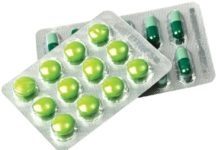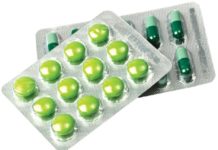Quality Audit: Introduction, Types and Procedure
Auditing in simple terms could be defined as inspection of a process or a system to make sure that it complies with the requirements of its intended use.
In pharmaceutical industry audits are virtual means to evaluate compliance with the set objectives as defined in the quality system and thereby paving a path of continuous improvement program by giving the feedback to the management.
There are two types of audits that are conducted:
- Internal Audit (Self Inspection): This is conducted within the premises to monitor the implementation and respect of good manufacturing practices. This is also done to have prior information about the flaws in the system and taking necessary corrective and preventive measures.
- External Audit: This is conducted for the suppliers or any outsourcing operations carried out by the pharmaceutical industry. The contract giver (Industry) is responsible to access the competence of the Contract acceptor (supplier or any other outsource operations department) as per the GMP guidelines.
Rationale for Conducting Internal and External Audit as per ICH Guidelines Q10:
PROCEDURE FOR CONDUCTING AN AUDIT:
It is mandatory that there should be a well written procedure for conducting an audit whether it is an internal or external audit. The procedure should begin with a clear objective that why an audit is being conducted. Other important point that must be described are as follows:
- Frequency of Audit: The procedure how frequency of audit must be defined and as per that frequency must be set and followed accordingly.
- Responsibilities: The audit team must be defined that will be responsible for conducting and reviewing the audit reports. The people in the audit team must be well equipped with the operations and procedures that are being audited.
- Documentation: It is important to document each and every audit conducted as it not only helps from regulatory perspective but also act as reference document to have a insight of flaws previously faced.
- AUDIT PREPARATION:
The audit must be initiated with an agenda that gives a real time frame to all the parties involved. This is done so that all the personnel involved, documentation and everything else is available at the required time.
The proposed agenda must be agreed through a pre planned meeting and sorted out all the other requirements that must be required at the time of the audit (from a simple schedule detail to complex documentation).

Next audit checklist must be created that prevent unnecessary time wastage in reading big paragraphs. The checklist must be framed according to the type of the audit being conducted and procedures and policies to be audited.
- CONDUCTING OF AUDIT:
- The audit team must abide rules and regulations that are specific to the operations that are carried out at the premises. For example: if the audit is conducted in aseptic section it is mandatory to put the safety clothing as per cGMP that is must for everyone who so ever enter that portion.
- The audit must be done by communicating by the audit team with the personnel working and all the findings must be documented. But it is also important to explain the observations that make it more realistic rather than just noting it down and explaining later on.
- The audit team must be flexible. The procedure to meet the requirements of cGMP could be different in different industries hence the auditor must focus on the results and then decide about the observations.
- The conclusions obtained must be prepared, documented and finally completed as a audit report.
- COMPLETING AND FOLLOW UP OF AUDIT:
There should be a close out meeting after the conduct of the audit. The observations that are made and recorded should be clear to both the parties (auditor and auditee) as the commitments has to be made for corrective actions to be taken. For this the schedules are made to take the corrective actions against the observations made and through that follow up of audit is done. There might be some unusual activities found during the audit, for those preventive measures must be conducted to avoid any findings again.
Auditing is an integral part and cannot be neglected as it helps in product realisation, process performance, quality monitoring. It is must tool for continuous improvement of quality system of an industry.












